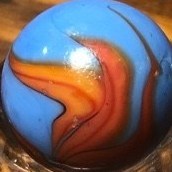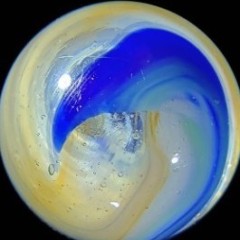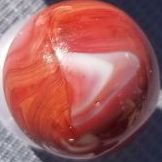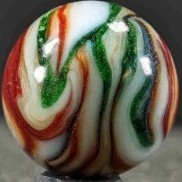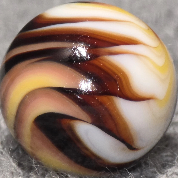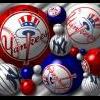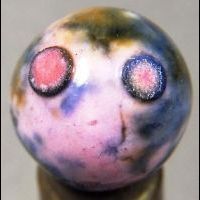Leaderboard
Popular Content
Showing content with the highest reputation since 11/15/25 in Posts
-
6 points
-
6 points
-
5 points
-
5 points
-
5 points
-
@Chad G. I have 8 Veili wirepulls .93 to .97. Just looked up @warcor and he is from the UK.5 points
-
5 points
-
5 points
-
5 points
-
5 points
-
4 points
-
4 points
-
4 points
-
The Nickel Guy wow! I was blown away when I received this box of treasures ! Of course the first thing I saw was that massive Rectangular Planter 😍 And then getting to unwrap all the other packages was like early Christmas, but I suppose that's the whole point haha. An Andy Davis Spinning Top and Base, three Peltier Transparent Rainbos, a WHOPPER 1 Inch Vacor Spaghetti, a Vitro Conqueror (which I've always admired, but now I own one!), four WV Swirls for which I now own the book and can study them to find out what I have . . . but WAIT! There's more! An absolutely gorgeous set of Vacor SuperNovas which were handpicked for me for their unusual darker color 🤩 AND some Alley Cullet dug by Ron Shepherd ❤️ with handpicked Alley marbles. . . . WHAT?? @The Nickel Guy This was an amazing way to start the Christmas season, all this Orange just lifts my spirit. I mean I know you have BOATLOADS of Vacor but to handpick a full game set, that is really something. I can't pick a favorite here, I look at the Spaghetti shooter and that's my favorite, but then there is something so satisfying about cullet with matching marbles, the dramatic colors of the spinning top and base, I feel like a squirrel trying to cross the road lol, which one do I look at? I suppose for collecting strictly Akro Agate for 20 years, these new additions are especially exciting for me. Thank you The Nickel Guy, Merry Christmas to you and to all here. This was fun and I'm glad I had the opportunity to participate in this Christmas Exchange.4 points
-
4 points
-
4 points
-
I drove my wife crazy this afternoon looking for our old camcorder, lol4 points
-
4 points
-
I recently won an auction and these 14 Vitro marbles were in the lot. I believe they might be Tiger Eye Type 3 and range from 21/32 to 3/4 in diameter. The yellow pole is nice and round but some of the purple poles are kind of small and curved. They are all very nice but there may be a light fracture on one or two.4 points
-
4 points
-
Since a large percentage of WVS posted here turn out to be Alleys I separate those as time goes by. Having those sorted and stacked. It kind of gets easier to spot the ones that aren’t. And I said kinda. My Wife promised I’d be getting THE BOOK for my birthday present or for Christmas. It’ll be better then my 2 front teeth 🔥 RAR4 points
-
4 points
-
Quiet ! I’m watching Young Sheldon and he ironically was just talking about the number 42. 🤪🔥 RAR4 points
-
4 points
-
4 points
-
4 points
-
With all those tight "rib bones" in pic's 4 and 6 it could be a Veiligglas wirepull.4 points
-
Heatons can have a tongue. From what I've learned (from cheese) the tongue trait is more prominent with Ravenswood than other makers, but it can exist with any swirl maker. I learned this when he ID a Heaton for me with a clear tongue.4 points
-
4 points
-
4 points
-
4 points
-
4 points
-
4 points
-
Actually, I don't get notifications, but someone let me know this was here. Christie has already reached out to me via email, so we're talking about it. But, yes, I still have the statue. I bought it as part of Bert Cohen's collection, when I bought the collection after he passed away. I have no idea where Bert got it from, and of course Rosalie didn't know. Subsequently I leant it to the Kansas City Toy Museum back in 2018 I think for the exhibit that Scott McBride had put together on marble tournaments. Since then it has been sitting in the packing crate tucked in the back of my storage room. Interestingly, Marie Lawley was feted at the Eastern States Exposition (The Big E) the year that she won her championship and was presented with a loving cup marking the occasion. Coincidentally it came to me as a consignment earlier this year and I sold it in an auction over the summer. The listing is here: https://bid.marbleauctions.com/online-auctions/blocks-marble-auctions/miscellaneous-trophy-rare-presentation-trophy-silverplate-79736194 points
-
4 points
-
4 points
-
@Fire1981 @akroorka @Tommy @The Nickel Guy @disco005 @Wolf @Parmcat @SequoiaBET Good Morning and Merry Christmas! Here are the pairings for the exchange for 2025! Akroorka/Tommy Fire1981/Vamarbles The Nickel Guy/Disco005 Parmcat/SequoiaBET Wolf/ Akroorka We only had 9 sign up so I’m asking @akroorka if he would be kind enough to exchange twice Here’s how it works. Contact your member/partner through Private Message to find out their address and maybe ask them a few questions? Types of questions you might ask…colors they like, do they like a certain maker, swirls or patches, etc? Keep it simple but good info to know! Last year most members sent around 5-10 different marbles to their partner. It doesn’t have to be high dollar marbles just something you would like to gift. Then send your gift to that member on or around December 10th!! Please use this thread to send pictures if you like once your present arrives. Keep it fun and Merry Christmas to all!3 points
-
3 points
-
No worries!! Everyone is at different levels and all understand this. It’s fun and festive! Will close this out on Sunday night and send everyone details on Monday Dec 1st! WHO ELSE IS IN?3 points
-
3 points
-
3 points
-
3 points
-
3 points
-
3 points
-
3 points
-
3 points
-
3 points
-
OK ! Your Pelt has not been polished. Now see the big ribbon is orange. This is a Superboy🔥 RAR3 points
-
Yes, a Peltier Red Angel, a little whacked, supposed to have NLR, well maybe tweener construction but the way it is is why I love it so much. Mibbage sold it a few years back. I used to save all kinds of pics of marbles I really liked, yes a great explanation, I like the same thing, being able to see the way the glass flowed when the marble was being made.3 points
-
3 points

